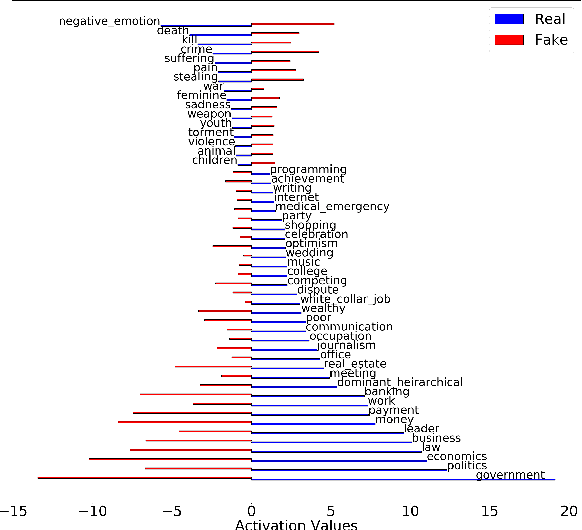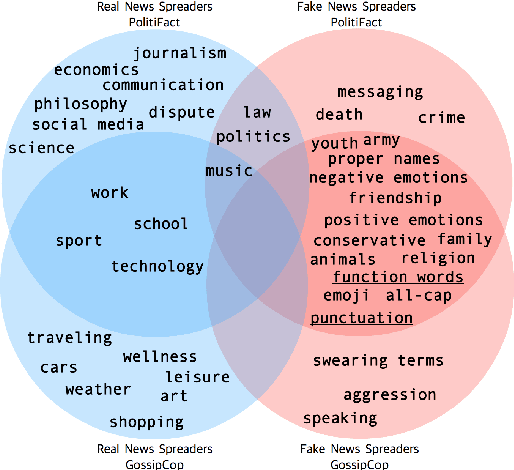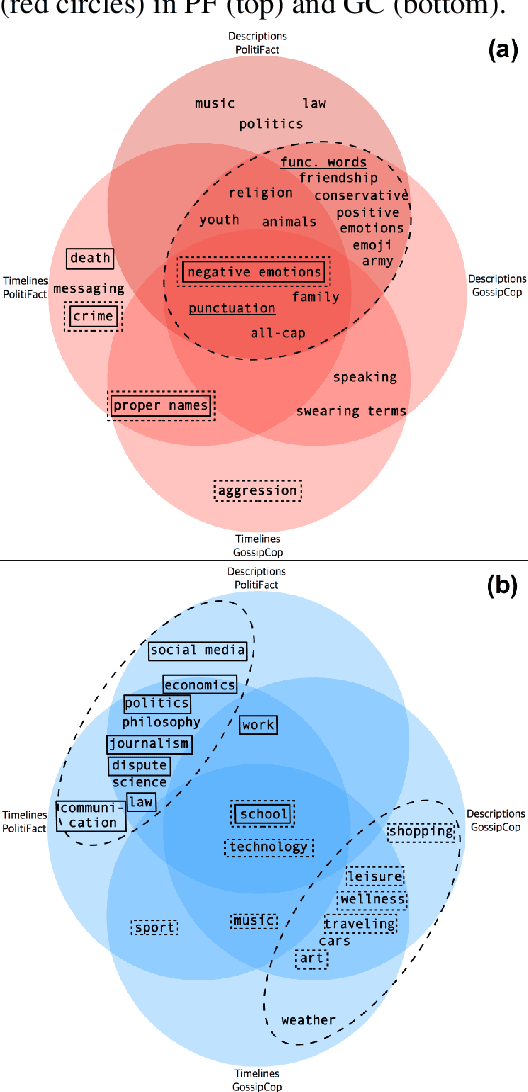Words are the Window to the Soul: Language-based User Representations for Fake News Detection
Paper and Code
Nov 14, 2020



Cognitive and social traits of individuals are reflected in language use. Moreover, individuals who are prone to spread fake news online often share common traits. Building on these ideas, we introduce a model that creates representations of individuals on social media based only on the language they produce, and use them to detect fake news. We show that language-based user representations are beneficial for this task. We also present an extended analysis of the language of fake news spreaders, showing that its main features are mostly domain independent and consistent across two English datasets. Finally, we exploit the relation between language use and connections in the social graph to assess the presence of the Echo Chamber effect in our data.
 Add to Chrome
Add to Chrome Add to Firefox
Add to Firefox Add to Edge
Add to Edge